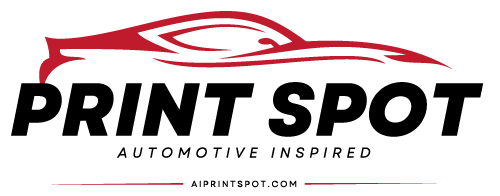Introduction to SEO for POD Shops
In today's digital marketplace, visibility is the currency of success. For Print on Demand (POD) shops, this means leveraging Search Engine Optimization (SEO) to stand out from the crowd. SEO is not just about improving rankings; it's about connecting with your audience at the moment they are searching. This guide dives deep into strategies that tailor SEO for the unique challenges and opportunities faced by POD shops.
Keyword Research: The Foundation of Your SEO Strategy
Effective keyword research is the cornerstone of SEO. It involves identifying the words and phrases potential customers use to find products like yours. Start with broad seed keywords related to your niche (e.g., "custom t-shirts," "print on demand art"), and use tools like Google's Keyword Planner to discover variations and long-tail keywords. Analyzing competitors and using keyword research tools can reveal gaps in the market and opportunities for your shop.
- Tool Tips: Utilize SEMrush or Ahrefs to analyze keyword difficulty and search volume. Look for keywords with high search volume but low competition to find your niche.
- Customer Language: Dive into forums, social media, and customer reviews to understand the language your customers use. This insight can reveal valuable long-tail keywords that real users are searching for.
Optimizing Your POD Shop with On-Page SEO
On-page SEO involves optimizing individual web pages to rank higher and earn more relevant traffic. For POD shops, this means carefully crafting product titles, descriptions, and meta tags.
- Product Descriptions: Write unique, compelling product descriptions that incorporate your target keywords. Avoid manufacturer's descriptions to prevent duplicate content issues.
- Meta Tags: Title tags and meta descriptions are crucial for click-through rates. Include target keywords and create compelling descriptions that encourage users to click.
- Image Optimization: Use high-quality images with optimized file names (e.g., "custom-vegan-leather-notebook.jpg") and alt tags. This not only helps with SEO but also improves user experience.
Leveraging Content Marketing
Content marketing is a powerful tool for POD shops. It helps establish your brand as an authority, improves your site's SEO, and provides value to your customers.
- Blogging: Create a blog to share insights, designs, and trends related to your niche. Use keywords naturally throughout your posts to improve your site’s visibility.
- Video Content: Videos can significantly boost engagement. Consider creating tutorials, product showcases, or customer review videos. Embed these videos on your site and optimize the titles and descriptions for SEO.
- User-Generated Content: Encourage customers to share their purchases on social media and tag your shop. User-generated content can provide social proof and contribute to your content marketing efforts.
Technical SEO: Ensuring Your Site is Search-Engine Friendly
Technical SEO involves optimizing the infrastructure of your site to help search engines crawl and index your site more effectively.
- Mobile Optimization: With mobile searches continually rising, ensuring your site is responsive and mobile-friendly is crucial.
- Site Speed: Optimize your site's loading time by compressing images, leveraging browser caching, and minimizing CSS and JavaScript. Tools like Google's PageSpeed Insights can provide specific recommendations.
- Secure Your Site: Use HTTPS to secure your site. This not only protects your customers' information but also contributes to your site's ranking signals.
Building Backlinks: Increasing Your Site's Authority
Backlinks are links from other websites to yours. They are a critical ranking factor for SEO because they signal to search engines that others vouch for your content.
- Guest Posting: Write articles for other blogs in your niche to get backlinks. Choose reputable sites with high domain authority for the best impact.
- Collaborations: Collaborate with influencers or brands that complement your products. This can lead to natural backlinks and increased visibility.
Continuous Learning and SEO Monitoring
SEO is not a set-it-and-forget-it task. It requires continuous monitoring, learning, and adjusting.
- Google Analytics: Use Google Analytics to track your site's traffic, bounce rate, and other important metrics. This data can help you understand what's working and what needs improvement.
- SEO Tools: Tools like Moz and SEMrush can track your rankings and provide insights into your site's SEO health.
Conclusion
Optimizing your Print on Demand shop for search engines is a comprehensive process that involves keyword research, on-page SEO, content marketing, technical optimization, and continuous monitoring. By implementing these strategies, you can improve your online visibility

